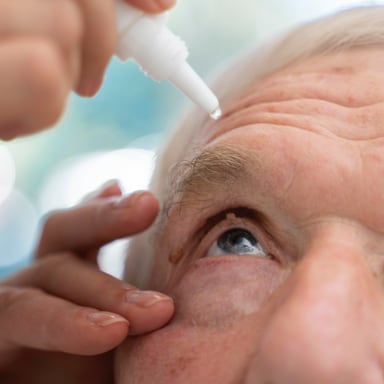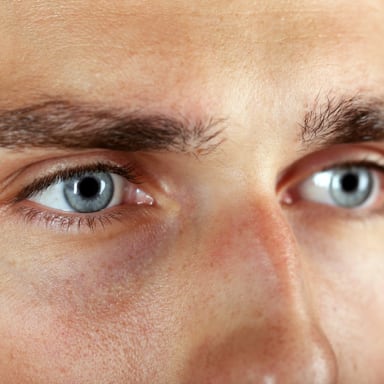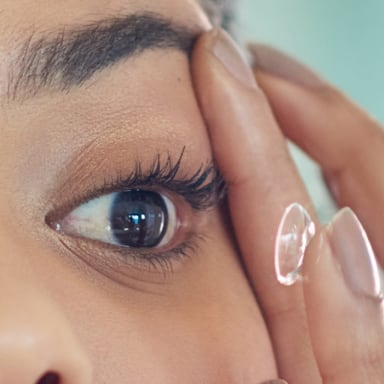At Eye Sea Davis Optometry, we often talk about how important it is to protect your vision as you age. One of the leading causes of vision loss in adults over 60 is a condition called age-related macular degeneration, or AMD. While there are two forms of this condition, wet AMD progresses faster and can significantly impact central vision if left untreated.
If you or a loved one has been diagnosed—or you’re noticing changes in your ability to read, drive, or recognize faces—understanding wet AMD is a critical step in protecting your eyesight.
What Is Macular Degeneration?
Age-related macular degeneration affects the macula, a small but powerful part of the retina responsible for your central vision and fine detail. When this area begins to deteriorate, you may start to notice a dark or blurry spot in the center of your vision, even while your peripheral (side) vision remains intact.
There are two types of AMD:
- Dry AMD – The most common form, which develops slowly over time.
- Wet AMD – A less common but more aggressive form that can lead to rapid vision loss.
What Makes Wet AMD Different?
Wet AMD occurs when abnormal blood vessels grow underneath the macula and begin to leak fluid or blood. This leakage damages retinal cells and leads to scarring, which can cause sudden and permanent central vision loss if not treated promptly.
The medical term for this condition is neovascular or exudative AMD, and while it only accounts for about 10–15% of all AMD cases, it causes the majority of serious vision loss related to the disease.
Signs and Symptoms of Wet AMD
Wet AMD can come on suddenly. If you experience any of the following symptoms, it’s important to schedule an eye exam right away:
- Blurry or distorted central vision
- Straight lines appearing wavy (a symptom called metamorphopsia)
- A dark or empty spot in the center of your vision
- Rapid loss of central vision in one or both eyes
- Difficulty reading, driving, or recognizing faces
- Colors appearing faded or dull
One of the tools we use at Eye Sea Davis Optometry to screen for macular changes is an Amsler Grid, a simple checkered chart that helps detect early signs of wet AMD. We’ll show you how to use one at home, especially if you’re at higher risk.
Who’s at Risk for Wet AMD?
Several factors increase the likelihood of developing AMD:
- Age (especially over 60)
- Family history of macular degeneration
- Smoking
- High blood pressure or cardiovascular disease
- Prolonged UV exposure
- Poor diet low in leafy greens and antioxidants
Wet AMD can develop from the dry form of the disease, so even those with mild changes in their macula should have regular monitoring and lifestyle counseling.
How Is Wet AMD Diagnosed?
We use advanced diagnostic tools at Eye Sea Davis Optometry to detect wet AMD as early as possible:
- Retinal imaging (OCT scans) to view fluid beneath the retina
- Dilated eye exams to assess blood vessel growth
- Visual acuity and Amsler grid tests
- Referrals to retinal specialists for further evaluation and treatment
Early detection is essential. Many people don’t realize anything is wrong until their vision is already impaired—so if you’re over 60, yearly eye exams are especially important.
Can Wet AMD Be Treated?
While there is no cure for wet AMD, treatment can slow progression and help preserve remaining vision. The most common treatment is:
- Anti-VEGF injections – Medications like Avastin®, Eylea®, or Lucentis® are injected into the eye to block the protein that causes abnormal blood vessel growth. These injections can reduce fluid buildup and help stabilize or even improve vision over time.
Additional treatments may include:
- Laser therapy (in select cases)
- Low vision aids and vision rehabilitation
- Nutritional supplements (like the AREDS2 formula) to support retinal health
We work closely with local retinal specialists and guide patients through the diagnosis, referral, and follow-up care process.
Living with AMD
A diagnosis of wet AMD can feel overwhelming, but you’re not alone. Many people continue to live full, active lives with the help of low vision devices, proper monitoring, and support from their eye care team.
At Eye Sea Davis Optometry, we’re here to support you every step of the way—with education, personalized care, and the latest in retinal screening and imaging.
Final Thought
Wet age-related macular degeneration is a serious eye condition that requires urgent attention—but with early diagnosis and proper treatment, vision loss can often be slowed or even partially reversed.
If you’re noticing any signs of vision changes—or are due for your annual eye exam—don’t wait. Schedule a comprehensive eye exam today at Eye Sea Davis Optometry. We’re proud to serve the Davis, CA community with advanced eye care, compassionate service, and a commitment to preserving your sight for life.



















